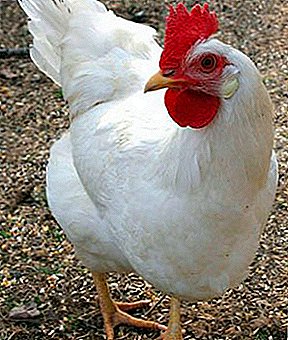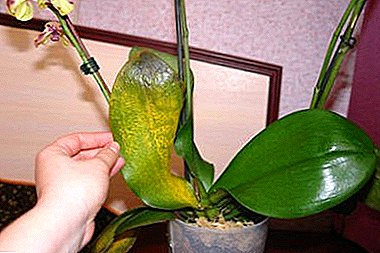
Chinese rose or hibiscus enjoys special popularity among experienced and novice gardeners. The plant has large buds of the most various shades which will perfectly fit into any interior.
How to plant at home?
Hibiscus is an unpretentious plant, but its transplant has several subtleties.
 Soil / soil - which land is suitable for tea rose?
Soil / soil - which land is suitable for tea rose?
Cuttings of Chinese roses transplanted into loose soil with neutral acidity - it contributes to their rapid root formation. Young plants need nutritious, but not greasy soil.
Adult hibiscus are less demanding on the soil, only 2 conditions must be met - drainage and good friability. An adult plant is transplanted only when the pot becomes small.
Soil composition
For planting cuttings use clean sand or a mixture of one part of sand and one part of peat. In such a soil is 25-30 days - during this period the plant forms a stable root system and it is already transplanted into a pot to form a bush. For a young tea rose, the soil is prepared from the following components:
- 1 part of compost or humus;
- 2 pieces of turf;
- 1 part of sand.

The composition sometimes includes one part of leafy earth to give greater nutritional value.
To improve the looseness of the soil, add pieces of charcoal and some peat to it. And to accelerate the formation of buds in the soil include a small amount of bone meal. As drainage use clay shards or expanded clay.
For transplanting or planting hibiscus, the use of intact manure or mullein is contraindicated.
What pot is needed when planting / transplanting?
In order for the plant to grow healthy and strong, the following recommendations should be followed:
- For planting cuttings of Chinese roses use a low pot (7-10 cm). Its diameter depends on the number of seedlings. After rooting, each stalk is planted in a separate container with a height of up to 10 cm, with a radius of 4-5 cm.
- The size of the pot for an adult tea rose is chosen very carefully. When the crown of the plant grows extensively, hibiscus is transplanted into the container one size larger: its diameter and height should be 5-7 cm higher than the size of the previous dish.
- The materials used for pots should also be selected carefully. Chinese rose grows well in ceramic pots and wooden tubs. In plastic containers, the roots of the plant will overheat. Immediately after buying pots, they are soaked in boiling water for 2-3 hours. Tanks that have been in use, washed with running water (without the use of special cleaning products).

The best season for planting and transplanting hibiscus - Spring. At this time of year, the plant is gaining momentum and growing. The best period for breeding hibiscus cuttings - from March to May: for the next two months of spring, the plant will take root and have time to pick color. Planting of young, rooted cuttings that formed the shoots, make in May. Transfer of adult tea rose can be done in any month of spring.
How to transplant at home?
Transplanting Chinese roses at home is a simple task, however, for the plant to quickly take root and become in color, certain rules must be followed.
Transplant after purchase
Transplanting tea roses after purchase is undesirable, especially if the plant is in flowering state. However, if a hibiscus is sitting in an unsuitable pot, then it is best to transfer it to another vessel.
 Is it possible to replant hibiscus in the fall - why?
Is it possible to replant hibiscus in the fall - why?
The natural flowering period is winter and summer. Autumn is a period of rest, so a transplant at this time of year is undesirable. However, the time of flowering tea rose can be shifted. In order for the plant to form buds in the fall, pruning and transplanting is done in May.
Hibiscus transplantation is performed only when it becomes really cramped in a pot. Young plants need this procedure once a year, adults (over five years old) once every 3-4 years.
When the tea rose reaches impressive dimensions and the transplant becomes a laborious process, then replace 5-6 cm top layer soil in a pot.
What to do if fades after transplant?
Sometimes it happens that a tea rose fades and dries after a transplant. This is a normal reaction of a plant to a change of place and should not be ignored.
The reasons
There are few reasons for hibiscus withering, here are the most frequent ones:
- lack of light;
- change of location;
- overabundance or lack of moisture;
- damage to the rhizome during transplantation.
 How to fight?
How to fight?
During the period of withering the plant must be access to light and moisture.
If the root system was damaged during transplantation, the Chinese rose will have to be re-rolled. To do this, the plant is carefully pulled out of the pot, the damaged roots are carefully cut with a sterilized knife, and the sections are treated with potassium permanganate.
To the healing process proceeded faster, add to the soil vermiculite.
Following these simple guidelines will allow you to get from the hibiscus abundant and regular flowering.
A photo
More photos of planting and care for hibiscus, see below:
















